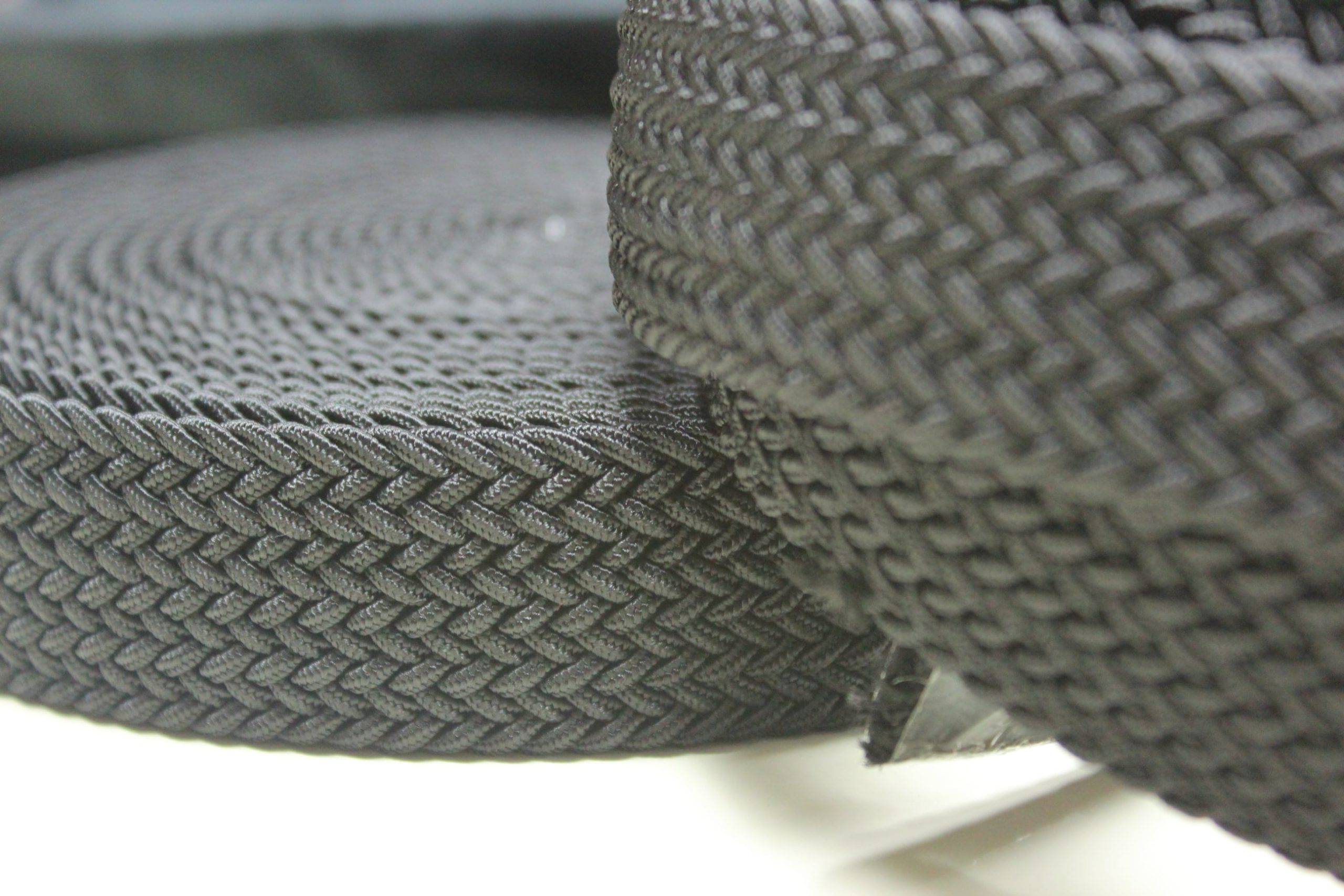Understanding the Differences Between Knitted Webbing and Braided Webbing
In the world of webbing, we often hear the terms knitted webbing and braided webbing. These two types of webbing have significant differences in terms of production process, structure, flexibility, durability, and appearance. Understanding these differences is crucial for choosing the right type of webbing according to your application needs.
Production Process
Knitted Webbing:
Knitted webbing is produced by interlocking yarns using a knitting machine, similar to how fabric is knitted. This process results in a softer and more elastic webbing.
Braided Webbing:
Conversely, braided webbing is made by braiding three or more strands in a diagonal pattern. This process creates a dense and interwoven webbing that provides high strength and flexibility.
Structure
Knitted Webbing:
Knitted webbing has a softer and more elastic structure due to the loops formed during the knitting process. This structure makes it suitable for applications requiring comfort and elasticity.
Braided Webbing:
Braided webbing, with its dense and interwoven structure, provides high strength and flexibility. This webbing is ideal for applications requiring extra strength and durability.
Flexibility
Knitted Webbing:
This type of webbing is highly flexible and elastic, making it suitable for applications that require high elasticity. Knitted webbing is more elastic and flexible compared to braided webbing.
Braided Webbing:
Although highly flexible, braided webbing is ideal for applications requiring movement and conformity. Its flexibility allows this webbing to adapt to various shapes and pressures.
Durability
Knitted Webbing:
Generally, knitted webbing is less durable compared to braided or woven webbing. However, it still provides excellent elasticity and comfort.
Braided Webbing:
Braided webbing has exceptional resistance to abrasion and damage, making it ideal for uses requiring extra strength and durability.
Appearance
Knitted Webbing:
Knitted webbing has a smoother surface with visible loops and a texture more similar to fabric, giving it a softer and more aesthetic appearance.
Braided Webbing:
Conversely, braided webbing usually has a textured and braided appearance, giving it a rougher and stronger look.
Conclusion
Choosing between knitted webbing and braided webbing greatly depends on your application needs. If you require webbing that is elastic and comfortable, knitted webbing is the right choice. However, if you need webbing that is strong and durable, braided webbing is the best option.
For more information and product consultations, do not hesitate to contact us at PT. Kompindo Fontana Raya via email at info@fontana.co.id or phone at 021 5451040 / 0811 1200 1367.

